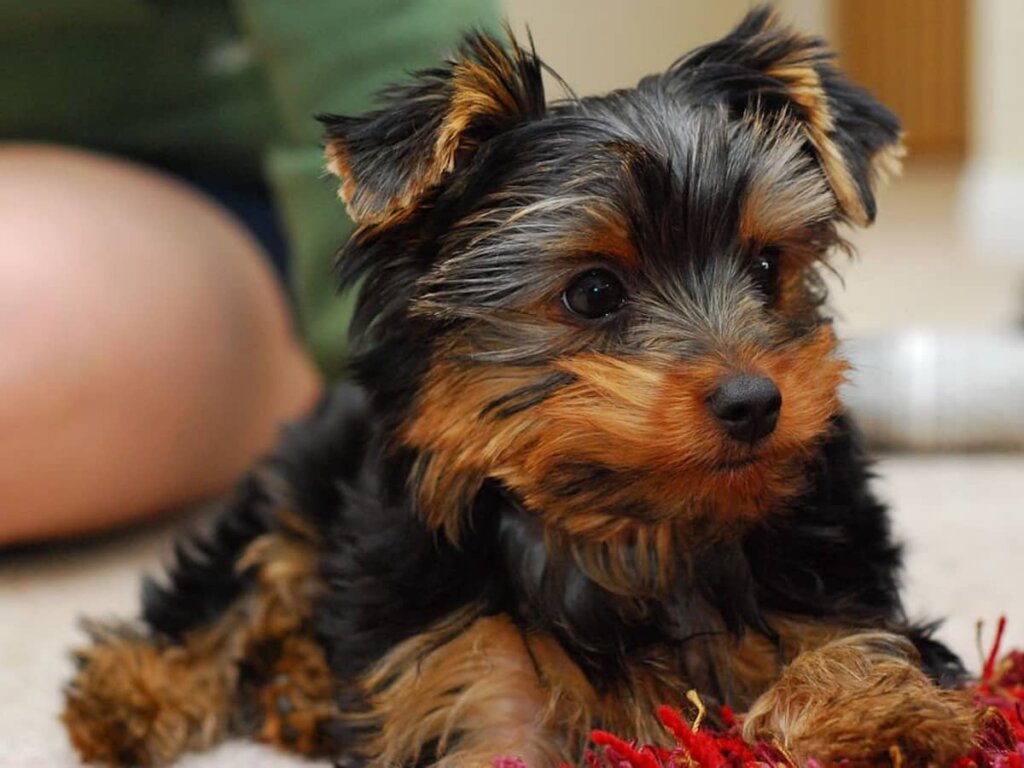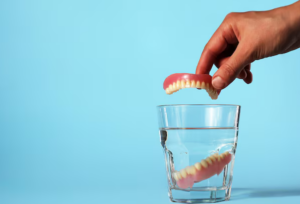
The Yorkshire Terrier is considered an adorable puppy for several reasons. Firstly, they have a small, compact size and a fluffy coat that makes them look like cute teddy bears. Additionally, they have big, expressive eyes that give them a puppy-like appearance even when fully grown. They also have sweet and affectionate personalities, which makes them great companions and lap dogs.
The Yorkshire Terrier dog breed is also known for its playful and energetic nature, which makes them great family pets. In addition, they are intelligent and easily trainable, which makes them a popular choice for people looking for a loyal and well-behaved companion. Their small size also makes them ideal for apartment living or people with limited space.
Overall, their cute appearance, affectionate nature, and playful personality make the Yorkshire Terrier an adorable puppy that many love.
Bringing Your Puppy Home On the First Day
Here are some tips to make your pet’s first day at home comfortable and enjoyable:
Introduce Them to Their New Home:
Show your puppy around your home and allow them to explore their new surroundings. For example, show them where their bed, water, and food bowls are.
Establish A Routine:
Start establishing a way for your puppy, including feeding times, potty breaks, playtime, and nap time.
Start Training:
Begin introductory training sessions with your puppy, such as teaching them their name and basic commands such as “sit” and “stay.”
Provide Affection:
Give your puppy plenty of love and attention, including cuddles and praise for good behavior.
Ensure Your Home Is Safe:
Ensure it is safe for your new puppy by removing any hazards, such as electrical cords or toxic substances, and ensuring they cannot access any dangerous areas.
Schedule A Vet Visit:
Please schedule an appointment with your veterinarian to get your puppy checked out and to discuss their vaccination schedule and any other necessary health concerns.
Remember, bringing a new puppy home can be an adjustment for you and your new furry friend. Be patient, loving, and consistent with your training and routines, and your new puppy will quickly settle in and become a beloved family member.
How to Feed Your Yorkshire Terrier as They Grow?
The Yorkshire Terrier is a small breed of dog that requires a balanced and nutritious diet to maintain its health and well-being. As they have a high metabolism, they must be fed small meals throughout the day to keep their energy levels up.
A diet rich in protein, carbohydrates, and fats is essential for their growth and development. Good protein sources for Yorkshire Terriers include chicken, fish, and turkey, while carbohydrates can be obtained from rice, sweet potatoes, and peas.
In addition, healthy fats found in fish, coconut, and flaxseed oils are crucial for maintaining a shiny coat and healthy skin. Owners can help their Yorkshire Terrier lead a happy and healthy life by providing a healthy diet and controlling portion sizes. While delivering your Yorkshire Terrier with a healthy and balanced diet is essential, avoiding overfeeding them is equally important.
Obesity Is a Significant Problem in Small Dog Breeds Like Yorkshire Terriers
Overfeeding can lead to serious health problems like joint issues, diabetes, and heart disease. Therefore, owners should monitor their dog’s weight regularly and adjust their feeding habits accordingly. Treats should also be given in moderation and as part of their daily calorie intake.
Overall, a healthy and balanced diet is essential for the overall health and well-being of a Yorkshire Terrier. A nutritious diet should include high-quality proteins, carbohydrates, and fats to keep them energetic and maintain their growth and development. However, owners should also be mindful of overfeeding and provide regular exercise to prevent obesity and other health problems. Owners can ensure their Yorkshire Terrier lives long and healthy by paying attention to their diet and nutrition.
Training Your Yorkshire Terrier
As your puppy gets accustomed to your home and grows, keep in mind these training tips:
Training a Yorkshire Terrier puppy can be a fun and rewarding experience, but it requires patience, consistency, and positive reinforcement. Here are some tips for preparing your Yorkshire Terrier puppy:
Start with Basic Obedience Commands:
The first thing you should teach your puppy is basic obedience commands such as “sit,” “stay,” “come,” and “heel.” These commands will help your puppy understand what you expect from him and will also help you establish your leadership.
Use Positive Reinforcement:
Positive reinforcement is a powerful training tool that rewards your puppy for good behavior. For example, you can use treats, praise, or toys to reward your puppy when he does something right. This will encourage him to repeat the behavior in the future.
Be Consistent:
Consistency is key when training a puppy. Use the same commands and rewards every time, and stick to a regular training schedule.
Keep Training Sessions Short:
Puppies have short attention spans, so keep training sessions short and sweet. Aim for 5-10 minutes per session, and make sure to end on a positive note.
Socialize Your Puppy:
Socialization is an integral part of puppy training. Expose your puppy to various people, animals, and environments so he can learn how to behave in different situations.
Be Patient:
Training a puppy takes time and patience. So wait for your puppy to learn everything overnight, and be prepared to make mistakes.
Seek Professional Help If Needed:
If you’re having trouble training your puppy, don’t hesitate to seek professional help. A qualified dog trainer can provide guidance and support to help you prepare your puppy effectively.
When it comes to rewarding your Yorkshire Terrier puppy after training, it’s important to choose treats that are small, healthy, and low in calories. You don’t want to overfeed your puppy or give them something that will upset their stomach. Good options for treats include small pieces of cooked chicken or turkey, small amounts of cheese, or dog treats specifically designed for training. It’s also essential to reward your puppy immediately after completing the desired behavior so that they can connect the behavior and the reward.







